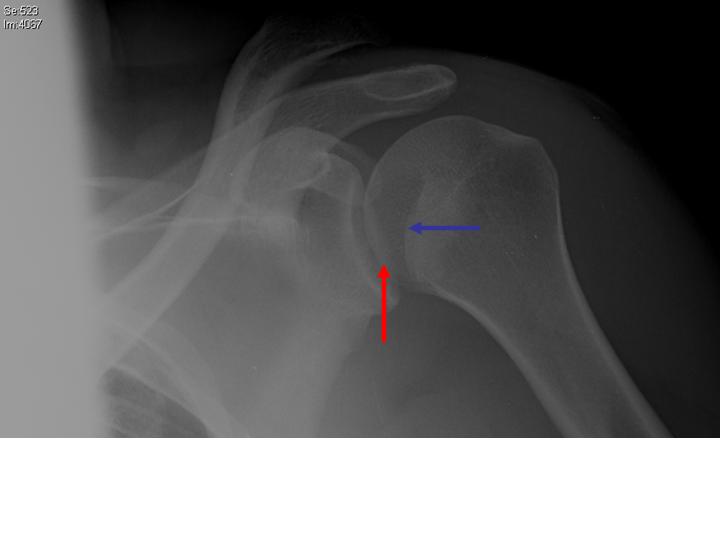Shoulder Case 1 ED Management
Posterior Shoulder Dislocation
ED Management
Reduction can be achieved under sedation by axial traction. Anterior pressure from behind the humeral head may help coax the humeral head over the glenoid rim. A sling or shoulder immobilizer is then placed. X rays should be repeated to confirm reduction and evaluate for associated fractures, most commonly glenoid rim fractures or humeral head impactions. These contribute to shoulder instability and are risk factors for recurrent dislocation. The patient should be referred to orthopedics within one week.
Postreduction film of the same patient. The blue arrow points to a cortical line along the medial humeral head, or "trough line sign", which represents an impaction fracture, or "reverse Hill-Sach's" lesion (compression fracture of the anteromedial portion of the humeral head produced by the posterior cortical rim of the glenoid). Notice how the humeral head and the glenoid now have normal elliptically-shaped overlap (red arrow).
